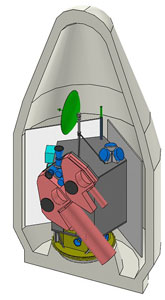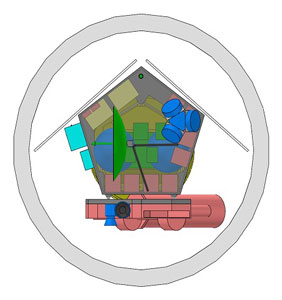Question: The flyby spacecraft has a solar panel to take in the Sun's energy and turn it into power for the spacecraft. The early concept for the solar panel was that it be one piece. During the design phase, the engineers decided they needed a larger panel to provide enough energy for the entire spacecraft. Now the spacecraft has two panels that are hinged. Why was the hinge necessary?
 |
 |
Answer: The initial design for the Deep Impact solar panels called for a single 5 square meter array. During development of the mission, power requirements grew for the various subsystems and the panel size was increased to 7.5 square meters. Fitting this amount of panel array into the Delta launch vehicle fairing required dividing the array into two panels with a hinge and folding each panel back against the spacecraft about 30 degrees. These kinds of analyses and resulting engineering solutions are part of the design process. It takes a lot of thought and team work to put a spacecraft into space.
Click here for more Brain Twisters.











